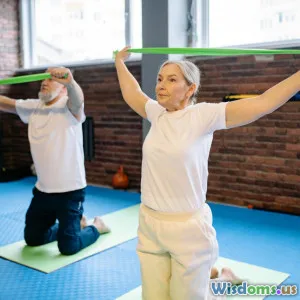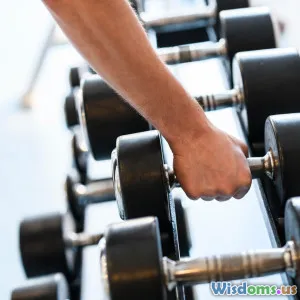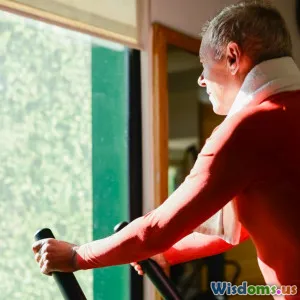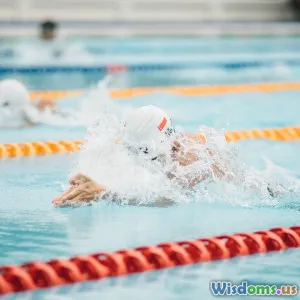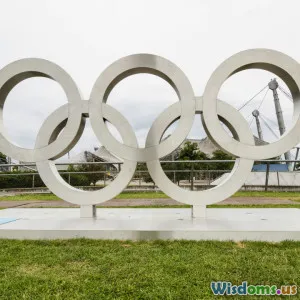
Inspirational Comebacks: Athletes Who Excelled After Turning 40
8 min read Discover how iconic athletes defied age, achieving greatness after 40 with inspiring comebacks and unmatched perseverance. (0 Reviews)
Inspirational Comebacks: Athletes Who Excelled After Turning 40
Aging is often associated with decline, especially in athletics where youth is prized for agility, speed, and endurance. Yet, some athletes defy this stereotype, achieving inspiring comebacks and careers that shine brighter after the age of 40. These examples challenge our perceptions of physical limits and toughness, showing that with dedication, strategy, and passion, age is truly just a number.
Introduction: Redefining Athletic Prime
The conventional belief is that most athletes peak in their 20s or early 30s, after which performance inevitably declines. However, a growing number of athletes are rewriting this narrative. Advances in sports science, nutrition, and training methodologies, combined with mental resilience, have opened pathways for remarkable athletic performance well into the 40s and beyond.
This article dives deep into the lives of legendary athletes who not only continued competing after 40 but also reached new heights. Their comebacks serve as an inspiration, reminding us of human potential despite the ticking clock.
Section 1: Physiological and Psychological Edge Beyond 40
Physical Adaptations and Experience
Though biological aging slows some physical capacities like muscle mass, recovery speed, and aerobic capacity, experience counterbalances these factors. Athletes become smarter with strategies, pacing, and improved technique, often making up for the physiological declines.
For instance, endurance athletes like marathon runners often find that mental stamina and race experience are critical components that evolve positively with age. Innovations in training, recovery protocols such as cryotherapy, and personalized nutrition have dramatically extended athletes’ careers.
Psychological Resilience
Age brings emotional maturity and psychological strength—a crucial factor in athletic comebacks. Veteran athletes often demonstrate heightened focus, resilience against pressure, and an ability to maintain motivation despite setbacks. These qualities are pivotal for executing comebacks.
Section 2: Trailblazing Athletes Who Excelled After 40
2.1 Serena Williams – Tennis Legend's Unyielding Spirit
Serena Williams remained competitive into her late 30s and won her 23rd Grand Slam, the Australian Open, just before turning 40. Despite injuries and motherhood, her comeback was fueled by an unwavering drive and strategic game evolution that minimized physical strain without compromising power.
Williams famously said, “You don’t learn to walk by following rules. You learn by doing, and by falling over.” Her journey underscores the merging of mental toughness with physical prowess, reshaping modern tennis standards for mature athletes.
2.2 Tom Brady – The Ageless Quarterback
Tom Brady, a seven-time Super Bowl champion, played some of his best football past age 40. His longevity in the NFL as a quarterback defied common beliefs about aging in contact sports. Brady’s strict diet, fitness regimen, and focus on injury prevention propelled his extended success.
Highlights include leading the Tampa Bay Buccaneers to a Super Bowl victory at age 43, cementing his legacy as the greatest quarterback regardless of age.
2.3 Dara Torres – Swimming Against the Tide of Time
American swimmer Dara Torres competed in the Olympics at age 41, winning three silver medals in 2008. Her story is remarkable because she paused her swimming career multiple times and returned stronger.
Torres attributed her success to personalized training, recovery science, and an optimistic mindset. Her achievements opened doors for discussions on how female athletes, particularly, can maintain peak performance well into their 40s.
2.4 Tom Glavine and Randy Johnson – Baseball’s Veteran Giants
Pitchers Tom Glavine and Randy Johnson pitched in Major League Baseball effectively into their 40s. Both adapted their pitching techniques to reduce velocity but increased precision and experience, maintaining elite performance.
Their careers highlight how sport-specific skills can evolve, allowing athletes to redefine themselves and remain competitive.
2.5 Kim Clijsters – Tennis Star’s Triumphant Return
Kim Clijsters, a former world No. 1, retired in her mid-20s and returned in her late 20s and early 30s, winning the US Open at age 27, back in competitive shape. Though slightly younger, her resilience and later years inform the ethos of athletic comebacks relevant to the over-40 age group.
Clijsters demonstrated the possibility of balancing family life and elite sports, a crucial message for athletes pondering a comeback under different life circumstances.
Section 3: Lessons from These Comebacks
Embracing Adaptability
Age demands evolution. Successful athletes shift how they train, emphasizing quality over quantity and incorporating recovery methods previously overlooked. Flexibility in routine enables sustained performance.
Prioritizing Recovery and Nutrition
Aging bodies require meticulous care, making recovery phases just as important as training. Nutritional advances tailored for older athletes, including anti-inflammatory foods and supplements, contribute to enhanced performance.
Mental Strength and Goal Setting
Veteran athletes set realistic but ambitious goals, stoking motivation without burnout. Their mental grit allows them to navigate physical setbacks, societal expectations, and self-doubt.
Inspiring the Wider Community
These comeback stories motivate not just athletes, but anyone facing age-related challenges, showing that reinvention and excellence are lifelong possibilities.
Conclusion: Age as a Catalyst, Not a Barrier
Athletes thriving post-40 redefine what is possible in sport and life. Their comebacks illustrate that peak performance need not be confined to youth but can emerge through experience, intelligent training, and psychological resilience.
From Serena Williams’ power-packed tennis games to Tom Brady’s championship-winning throws, the narratives of these athletes inspire action — to challenge limits, to seek excellence unbounded by age, and to embrace every season of life vibrantly.
In a world often obsessed with youth, these champions remind us that wisdom, discipline, and passion can propel us beyond conventional expectations, turning age into a powerful asset, not an obstacle.
References:
- Journal of Aging and Physical Activity
- Sports Medicine Advances
- Athlete autobiographies and interviews (Williams, Brady, Torres)
- Major League Baseball statistics and analysis
Rate the Post
User Reviews
Popular Posts










